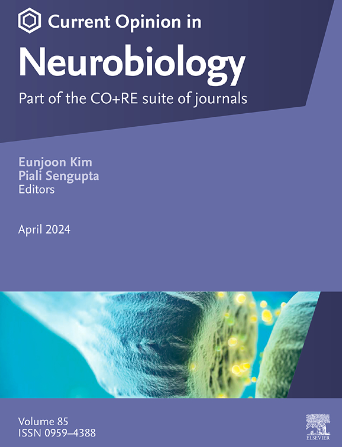Renal interoception: form, function, and open questions
IF 5.2
2区 医学
Q1 NEUROSCIENCES
引用次数: 0
Abstract
The kidneys filter the blood and balance fluid and electrolytes to keep the composition of the internal environment within the narrow parameters essential for life. A perturbation to the internal state, such as a sudden loss of blood or dehydration, engages autonomic efferent and neuroendocrine pathways to adjust kidney function rapidly and robustly. The mechanisms of these multiorgan pathways are extensively studied. By contrast, the roles of sensory afferent nerves in regulating renal function are just beginning to be understood. In this review, we examine recent advances in understanding the morphology, identity, and functions of the renal sensory nerves that form the first node in the interoceptive pathways that update the kidney on its own internal state. We end by highlighting open questions in the field, influenced by recent work in other areas of interoception neuroscience, and the outstanding gaps in our knowledge of kidney biology.
肾内感觉:形式、功能和开放性问题
肾脏过滤血液,平衡液体和电解质,使体内环境的组成保持在生命所必需的狭窄参数内。内部状态的扰动,如突然失血或脱水,参与自主神经传出和神经内分泌途径,以快速而有力地调节肾功能。这些多器官通路的机制被广泛研究。相比之下,感觉传入神经在调节肾功能中的作用才刚刚开始被理解。在这篇综述中,我们研究了在理解肾感觉神经的形态、身份和功能方面的最新进展。肾感觉神经是更新肾脏自身内部状态的感觉通路中的第一个节点。最后,我们强调了该领域的开放性问题,受到近期内感受神经科学其他领域工作的影响,以及我们在肾脏生物学知识方面的突出差距。
本文章由计算机程序翻译,如有差异,请以英文原文为准。
求助全文
约1分钟内获得全文
求助全文
来源期刊

Current Opinion in Neurobiology
医学-神经科学
CiteScore
11.10
自引率
1.80%
发文量
130
审稿时长
4-8 weeks
期刊介绍:
Current Opinion in Neurobiology publishes short annotated reviews by leading experts on recent developments in the field of neurobiology. These experts write short reviews describing recent discoveries in this field (in the past 2-5 years), as well as highlighting select individual papers of particular significance.
The journal is thus an important resource allowing researchers and educators to quickly gain an overview and rich understanding of complex and current issues in the field of Neurobiology. The journal takes a unique and valuable approach in focusing each special issue around a topic of scientific and/or societal interest, and then bringing together leading international experts studying that topic, embracing diverse methodologies and perspectives.
Journal Content: The journal consists of 6 issues per year, covering 8 recurring topics every other year in the following categories:
-Neurobiology of Disease-
Neurobiology of Behavior-
Cellular Neuroscience-
Systems Neuroscience-
Developmental Neuroscience-
Neurobiology of Learning and Plasticity-
Molecular Neuroscience-
Computational Neuroscience
 求助内容:
求助内容: 应助结果提醒方式:
应助结果提醒方式:


